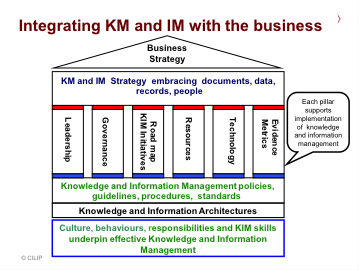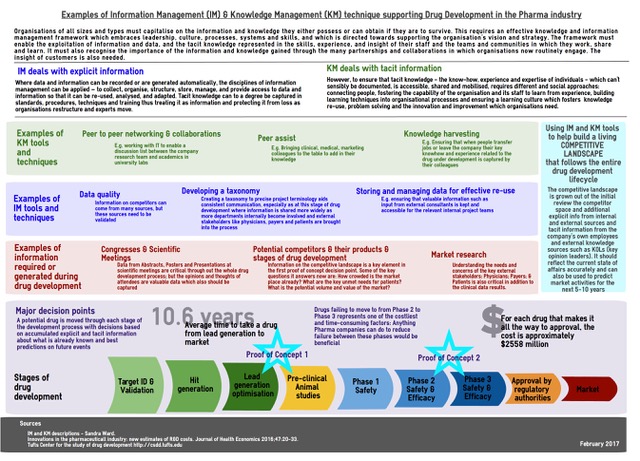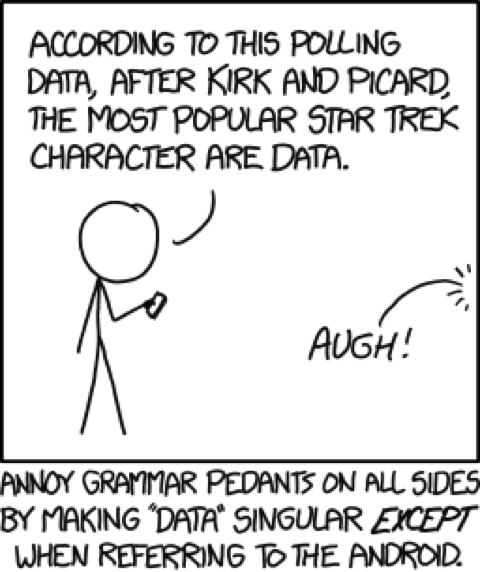Journal of CILIP’s Knowledge and Information Management Group Vol 33 (1) Spring 2017
Table of Contents
Welcome to the Knowledge & Information Management Group – ISG transformation
David Smith, Chair, K&IM National Committee
Information Management / Knowledge Management –
Two Sides of a Coin
Sandra Ward, Beaworthy Consulting
How Do Well-Implemented Information Management and Knowledge Management Programmes Assist the Drug Development Process in the Pharma Industry?
Denise Carter, DCision Consult
Passing a Verdict: Knowledge Management in a Top Law Firm
Jonathan Cowley
Finding Out What Our Researchers Really Want:
The Structured Interview
Mary Betts-Gray, Cranfield University
Opportunities in Research Data Support: The Data Librarian’s Handbook
Helen Edwards, Editor, Refer
Review: British Librarianship and Information Work 2011-2015
Lynsey Blandford, Canterbury Christ Church University
Announcements
CILIP Knowledge and Information Management Briefings
Recruiting and Developing Knowledge and Information Professionals
14 June 2017 at CILIP HQ
https://www.cilip.org.uk/recruitingki
Cybersecurity for Knowledge and Information Professionals
19 October 2017 at CILIP HQ
https://www.cilip.org.uk/cybersecurity
Knowledge and Information Management Group
Information Resources Awards 2017
Have you spotted a notable information resource recently?
If you did, why not nominate it for the Knowledge and Information Management Group Information Resources Awards 2017
We are looking for outstanding information resources, whether in print or electronic format, that are available and relevant to the knowledge, information management, library and information sector in the UK.
Print nominations must have been published between 1st January and 31st December 2016, and electronic nominations must be currently available and accessible.
Closing date for nominations is 30th June 2017
Submit your nominations at: https://goo.gl/forms/e3NOIPYoeV09W7y03
Knowledge and Information Management Walford Award
Do you know someone who has made an outstanding contribution to knowledge and information services in the UK?
If you do, why not nominate them for the Knowledge and Information Management Walford Award 2017
Nominations are welcome from anyone who knows and respects the work of the nominee.
Nominations close on 31st July 2017
Submit your nominations at:
https://goo.gl/forms/ku8j1HzwtZHMIKxE3
K & IM Refer: the journal of the Knowledge and Information Management Group of the Chartered Institute of Library and Information Professionals (CILIP), is published three times a year and distributed free to members of the Group.
Editor: Helen Edwards
Editorial team: Lynsey Blandford, Ruth Hayes
Cover Design: Denise Carter
Contact: Helen Edwards 07989 565739; hogedwards@gmail.com
Copyright © The contributors and the K & IM SIG 2017
Online edition https://referisg.wordpress.com
ISSN: 0144-2384






